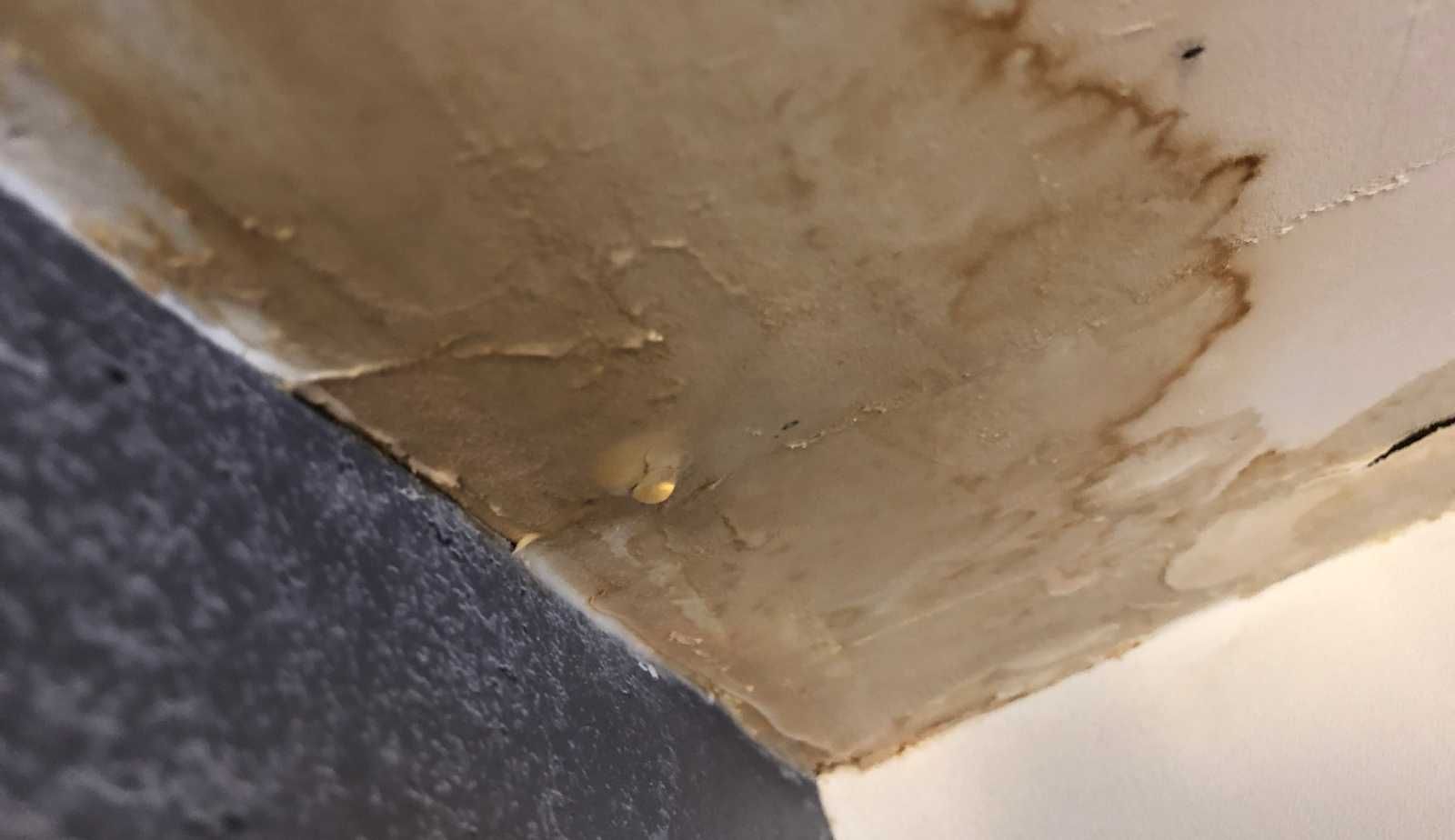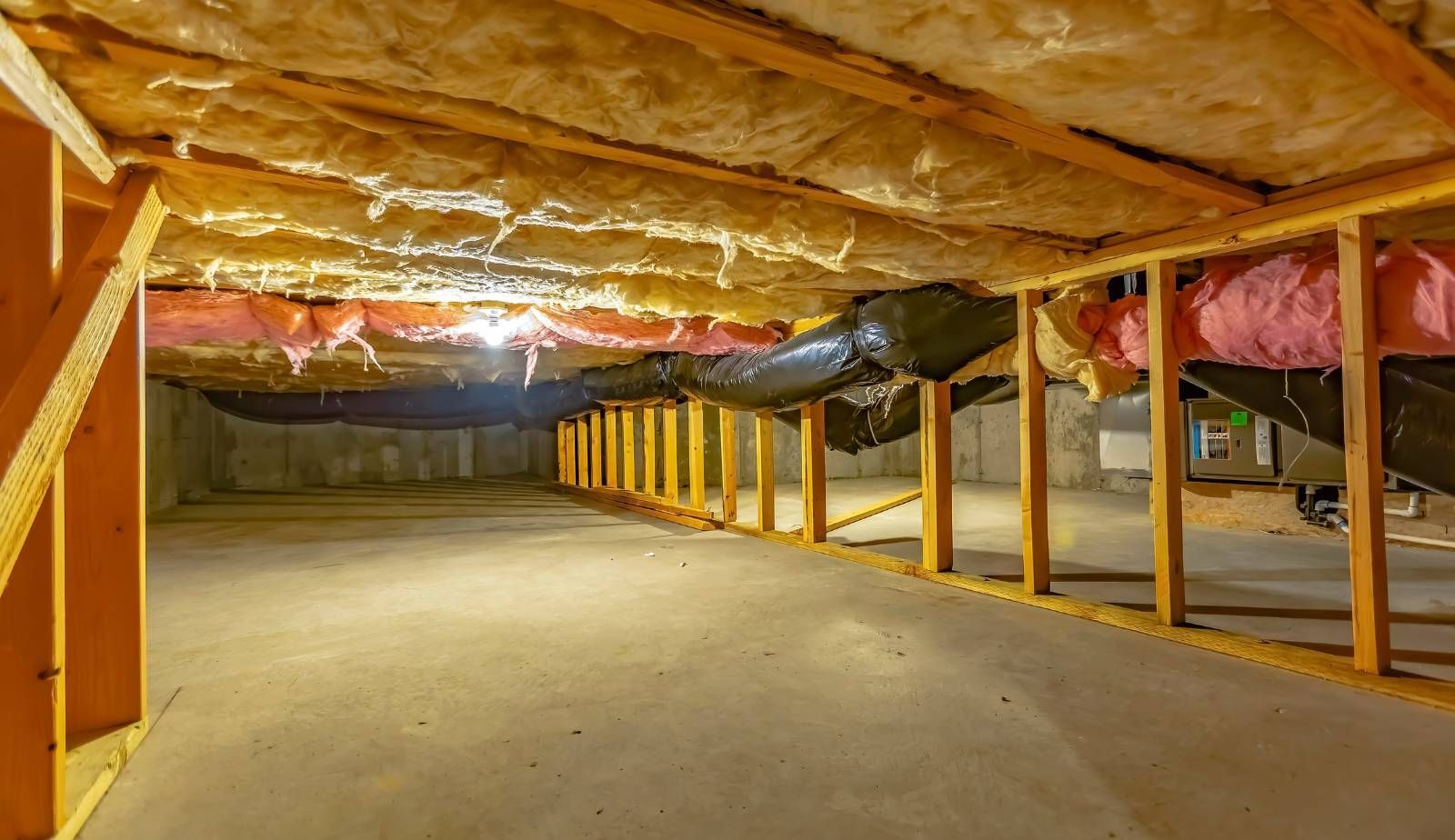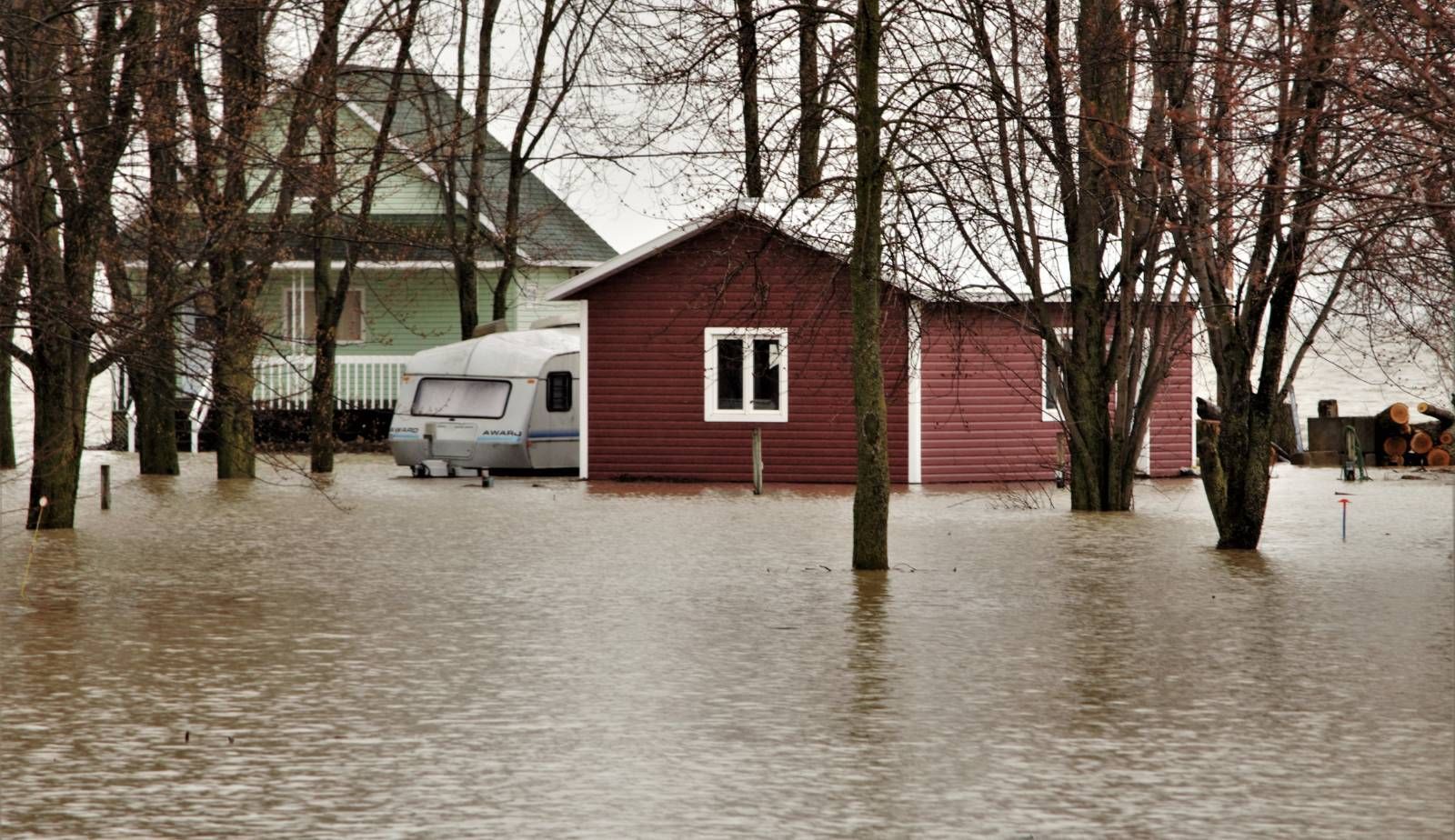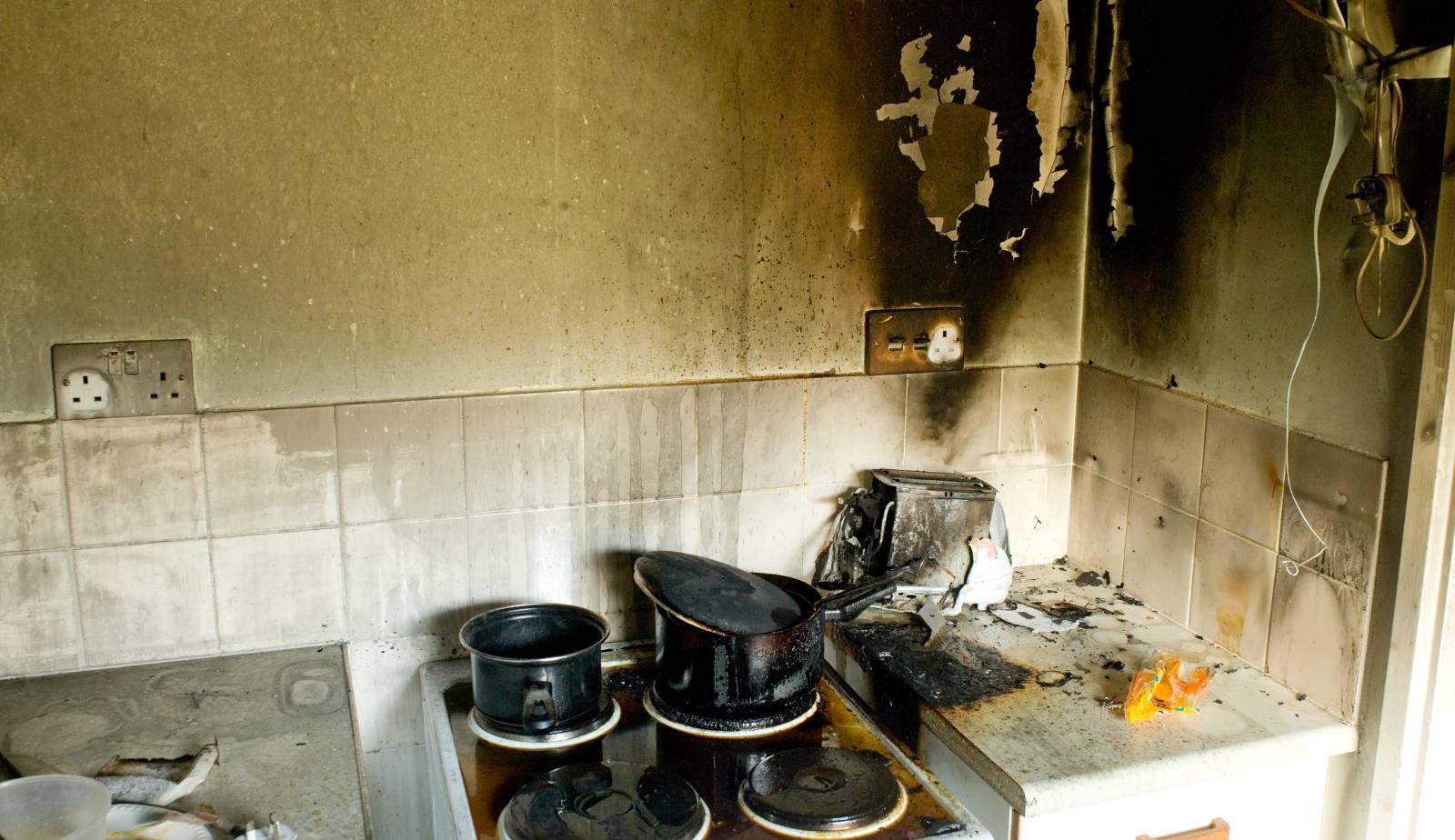The Do's and Don'ts After Discovering Water Damage: Practical Advice for Homeowners
Discovering water damage in your home can be a stressful and overwhelming experience.
Water damage can cause significant damage to your property and belongings, and if not addressed quickly, it can lead to long-term problems such as mold growth and structural damage. As a homeowner, it's crucial to know what to do (and what not to do) after discovering water damage to mitigate its impacts.
The first step after discovering water damage is to shut off the water source to prevent any more water from entering your home. This can help limit the damage and prevent further problems. Once the water source has been turned off, it's important to assess the situation and determine the extent of the damage. This can help you determine what steps to take next and whether you need to call in a professional restoration company.
While it's important to act quickly after discovering water damage, it's equally important to avoid making common mistakes that can make the situation worse. For example, it's essential to avoid using electrical appliances or turning on the lights in areas affected by water damage, as this can be dangerous. Additionally, it's important to avoid attempting to clean up the water or remove damaged materials on your own, as this can lead to further damage or even injury.
Immediate Response to Water Damage
Discovering water damage can be a stressful situation for homeowners. However, taking immediate action can help mitigate the damage and prevent further issues. Here are some essential steps to take immediately after discovering water damage:
Assessing the Situation
The first step is to assess the extent of the damage. Homeowners should check for any visible signs of water damage, including wet floors, walls, and ceilings. They should also check for any signs of mold growth or musty odors, which can indicate water damage that has been present for some time.
Stopping the Source
Once the homeowner has assessed the situation, they should try to stop the source of the water leak, if possible. For example, if the water damage is caused by a burst pipe, the homeowner should turn off the main water supply to the house. This can help prevent further damage and reduce the risk of electrical hazards.
Safety Precautions
Homeowners should take safety precautions when dealing with water damage. They should avoid touching any electrical appliances or outlets if there is standing water. Additionally, they should wear protective gear such as gloves, boots, and masks to avoid exposure to mold and bacteria.
Contacting Professionals
Homeowners should contact professionals to help with the restoration process. They can contact their insurance company to report the damage and find out what their policy covers. Homeowners can also contact a professional restoration company to assess the damage and provide recommendations for repairs. Restoration professionals have the necessary equipment and expertise to mitigate the damage and prevent further issues.
Taking immediate action is crucial when dealing with water damage. Homeowners should assess the situation, stop the source of the water leak, take safety precautions, and contact professionals to help with the restoration process. By following these steps, homeowners can mitigate the damage and prevent further issues.

Water Removal Process
After discovering water damage, it is important to remove any standing water as quickly as possible to prevent further damage. The following subsections provide practical advice on how to remove standing water and mop and dry the affected areas.
Removing Standing Water
The first step in the water removal process is to turn off the electricity and remove any furniture or other items from the affected area. Homeowners should wear protective gear such as gloves and boots to prevent injury. If the water is more than a few inches deep, a wet/dry vacuum or pump may be necessary to remove the standing water. Homeowners should be careful not to use their regular household vacuum cleaner as it is not designed for this purpose.
Mopping and Drying
Once the standing water has been removed, the next step is to mop and dry the affected areas. Homeowners should use a mop and bucket to remove any remaining water and then use fans or dehumidifiers to dry the area. It is important to ensure that the area is completely dry to prevent mold growth.
Homeowners should avoid using any electrical equipment or appliances until they have been checked by a professional. Additionally, they should avoid using any chemicals or cleaning products without first consulting a professional as they may cause further damage.
After discovering water damage, homeowners should take immediate action to remove any standing water and then mop and dry the affected areas. They should also be cautious when using electrical equipment and avoid using any chemicals or cleaning products without first consulting a professional.
Salvaging Belongings
After a water damage incident, salvaging belongings is a top priority for homeowners. While some items may be beyond repair, many can be saved and restored with the right approach and professional help. Here are some do's and don'ts for salvaging belongings after water damage:
Furniture and Upholstery
When it comes to furniture and upholstery, it's important to act quickly to prevent further damage. First, remove any wet cushions, pillows, or fabrics and hang them up to dry. If possible, place aluminum foil or plastic under furniture legs to prevent water damage. Avoid using a hair dryer or other heat source to dry furniture and upholstery, as this can cause damage. Instead, use a dehumidifier or fan to circulate air and dry the affected area.
Personal Valuables
Personal valuables such as photos, documents, and jewelry can be especially vulnerable to water damage. The first step is to remove these items from the affected area and place them in a dry, well-ventilated space. Avoid touching wet photos or documents, as they can be easily damaged. Instead, use a clean, dry cloth or paper towel to gently blot the surface. If possible, place photos or documents in a plastic bag and freeze them until they can be properly dried.
Electronics and Appliances
Electronics and appliances can be difficult to salvage after water damage. If possible, unplug any affected devices and remove batteries. Avoid turning on wet electronics, as this can cause further damage. Instead, place electronics and appliances in a dry, well-ventilated space and use a dehumidifier or fan to circulate air and dry the affected area. If necessary, consult a professional technician to assess the damage and determine if the device can be salvaged.
Salvaging belongings after water damage requires quick action and the right approach. Homeowners should prioritize removing wet items from the affected area and using a dehumidifier or fan to circulate air and dry the space. For more valuable or delicate items, such as photos or electronics, it may be necessary to consult a professional for assistance.

Cleaning and Disinfecting
After water damage, cleaning and disinfecting the affected areas is crucial to prevent mold growth and eliminate harmful bacteria. Homeowners should follow these guidelines to ensure a thorough and safe cleaning process.
Hard Surfaces and Flooring
When cleaning hard surfaces and flooring, homeowners should first remove any standing water using a wet/dry vacuum or mop. Then, they should wash the surfaces with a solution of warm water and detergent. If the water damage was caused by sewage or other contaminated water, a solution of one cup of bleach per gallon of water should be used to disinfect the surfaces. However, homeowners should be careful not to mix bleach with other cleaning products, as this can create toxic fumes.
If the water damage has affected hardwood floors, the homeowner should contact a professional restoration service as soon as possible. Hardwood floors are susceptible to warping and buckling when exposed to water, and a professional will be able to assess the damage and take appropriate action.
Soft Materials and Fabrics
When cleaning soft materials and fabrics, homeowners should first remove any standing water using a wet/dry vacuum or by blotting with clean towels. Then, they should wash the materials with a solution of warm water and detergent. If the materials are machine washable, they can be laundered in a washing machine. If the water damage has caused mold growth, a solution of one cup of vinegar per gallon of water can be used to kill the mold.
However, if the water damage has affected drapes, area rugs, or other delicate fabrics, the homeowner should contact a professional cleaning service. These materials require special care and cleaning methods to avoid damage.
In summary, cleaning and disinfecting after water damage is crucial to prevent mold growth and eliminate harmful bacteria. Homeowners should follow these guidelines for hard surfaces and flooring, as well as soft materials and fabrics, to ensure a thorough and safe cleaning process.
Preventing Mold and Mildew
Initial Prevention Steps
After discovering water damage, it is essential to take immediate action to prevent mold and mildew growth. Here are some initial prevention steps that homeowners can take:
- Turn off the power supply to the affected area and unplug all electronics.
- Wear protective gear such as gloves, masks, and goggles before entering the affected area.
- Remove any standing water and dry out the area as soon as possible. Use fans, dehumidifiers, and open windows to increase air circulation.
- Discard any porous materials that have been wet for more than 48 hours.
- Clean and disinfect all surfaces with a solution of one cup of bleach per gallon of water.
Professional Mold Remediation
In some cases, professional help may be necessary to prevent mold growth after water damage. Homeowners should consider professional mold remediation services if:
- The affected area is larger than 10 square feet.
- The water damage was caused by contaminated water, such as sewage or floodwater.
- The mold growth is extensive or difficult to access.
Professional mold remediation services can help homeowners to identify and address mold growth, remove contaminated materials, and prevent future mold growth.
It is important to choose a reputable mold remediation company that follows industry standards and guidelines. Homeowners should check for certifications, licenses, and insurance before hiring a mold remediation company.

Dealing with Insurance
After discovering water damage, dealing with insurance can be a daunting task. Homeowners should take immediate steps to understand their policy, document the damage, and file a claim. Here are some important do's and don'ts to keep in mind.
Understanding Your Policy
It is essential to understand what your insurance policy covers and what it does not. Homeowners should review their policy to determine if they have coverage for flood damage or water damage caused by a leaky roof, burst pipes, or other issues. Some policies may exclude coverage for certain types of water damage, such as gradual leaks or seepage. In such cases, homeowners may need to purchase additional coverage to protect their property.
Documenting the Damage
Homeowners should document the extent of the water damage as soon as possible. This documentation will be useful when filing a claim with the insurance company and when working with restoration professionals. Homeowners should take photographs and videos of the affected areas, including any visible damage to walls, floors, and ceilings. They should also keep a detailed inventory of damaged items, including their value and condition before the water damage occurred.
Filing a Claim
When filing a claim with the insurance company, homeowners should provide accurate and detailed information about the incident. They should include relevant facts, such as the date and time of the water damage, the cause of the damage, and the affected areas. Homeowners should also provide documentation of the damage, including photographs, videos, and inventory lists. It is crucial to file the claim as soon as possible to prevent further damage and ensure a timely response from the insurance company.
Dealing with insurance after discovering water damage can be overwhelming, but homeowners can take steps to protect their property and maximize their payout. By understanding their policy, documenting the damage, and filing a claim promptly, homeowners can ensure a smooth and successful restoration process.
Long-Term Repairs and Restoration
After the initial steps of mitigating the damage caused by water, homeowners must focus on long-term repairs and restoration. This involves assessing the structural damage, hiring a professional restoration company, and renovating and repairing the damaged areas.
Assessing Structural Damage
The first step in assessing structural damage is to hire a professional inspector to evaluate the extent of the damage. The inspector will look for signs of structural damage, such as cracks in the foundation, warped walls, and damaged floors. They will also examine the electrical and plumbing systems to ensure that they are functioning properly.
Based on the inspector's report, homeowners can determine the extent of the damage and the repairs required. Structural damage is a serious issue that requires immediate attention, and homeowners should not attempt to repair it themselves.
Professional Restoration Project
Once the structural damage has been assessed, homeowners should hire a professional restoration company to handle the restoration project. A reputable restoration company will have the necessary equipment and expertise to restore the damaged areas quickly and efficiently.
The restoration company will start by removing any remaining water and drying out the affected areas. They will then clean and sanitize the area to prevent mold and mildew from growing. Finally, they will repair any structural damage and replace any damaged materials.
Renovation and Repairs
After the restoration project is complete, homeowners may need to renovate and repair the damaged areas. This may involve replacing flooring, drywall, and other materials that were damaged by the water. Homeowners should work with their restoration company to determine the extent of the repairs required and to develop a plan for renovating the damaged areas.
In some cases, homeowners may choose to renovate the damaged areas to improve their home's functionality or aesthetic appeal. This may involve updating the plumbing or electrical systems, installing new fixtures, or redesigning the layout of the affected areas.
Long-term repairs and restoration are crucial to mitigating the impacts of water damage. Homeowners should hire a professional inspector to assess the structural damage, hire a reputable restoration company to handle the restoration project, and work with their restoration company to renovate and repair the damaged areas. By taking these steps, homeowners can ensure that their home is restored to its pre-damage condition and that any future water damage is prevented.
Preparing for Future Water Damage
After experiencing water damage, it is important to take steps to prevent future incidents. Homeowners can take several preventive measures to reduce the likelihood of water damage and prepare an emergency readiness plan to mitigate the impact of water damage emergencies.
Preventive Measures
Homeowners can take the following preventive measures to reduce the likelihood of water damage:
- Regular maintenance of the plumbing system, roof, and drainage systems is essential to prevent water damage. Homeowners should inspect their homes for any leaks or damage and fix them immediately.
- Installing a sump pump can help prevent water damage from flooding caused by heavy rains or storms. A sump pump is a device that pumps water out of your basement or crawlspace to prevent flooding.
- Homeowners should ensure that their gutters and downspouts are clear of debris to prevent water from backing up and causing damage to the roof or foundation.
- Installing a water leak detection system can alert homeowners to water leaks before they cause significant damage. This system can detect leaks and automatically shut off the water supply to prevent further damage.
Emergency Readiness Plan
Homeowners should prepare an emergency readiness plan to mitigate the impact of water damage emergencies. The following steps can help homeowners create an emergency readiness plan:
- Identify potential sources of water damage and take steps to prevent them.
- Keep important documents, such as insurance policies, in a safe and easily accessible place.
- Create an emergency kit that includes essential items such as flashlights, batteries, and a first aid kit.
- Develop a communication plan to ensure that family members know what to do in case of an emergency.
- Consider purchasing flood insurance to protect your home and belongings in case of a natural disaster.

Frequently Asked Questions
What immediate steps should I take upon discovering water damage in my home?
If you discover water damage in your home, it's important to document the damage, contact your insurance company, and take steps to mitigate further harm. Notify your insurance company promptly and follow their instructions on filing a claim. Shut off the water source to prevent any more water from entering your home. Turn off the electricity to avoid electrocution. Remove any furniture or other items that are in the affected area. Use a wet/dry vacuum to remove as much water as possible. Open windows and doors to allow air to circulate and speed up the drying process.
Who are the appropriate professionals to contact after identifying water damage in a property?
The appropriate professionals to contact after identifying water damage in a property are water damage restoration companies and mold remediation specialists. These professionals have the expertise and equipment to assess the damage, dry out the affected areas, and prevent mold growth. They can also help with repairing or replacing damaged materials.
What are the common mistakes to avoid when dealing with residential water damage?
The most common mistakes to avoid when dealing with residential water damage are waiting too long to take action, not properly documenting the damage, not contacting your insurance company, not hiring a professional restoration company, and not thoroughly drying out the affected areas. Waiting too long to take action can lead to further damage and mold growth. Not properly documenting the damage can result in your insurance claim being denied. Not hiring a professional restoration company can result in improper drying and mold growth. Not thoroughly drying out the affected areas can result in long-term damage and health hazards.
How can I assess the severity of water damage in my house?
You can assess the severity of water damage in your house by looking for signs of water damage such as discoloration, warping, or buckling of walls, floors, or ceilings. You should also look for signs of mold growth, such as a musty odor or visible mold. If you suspect that there is water damage in your house, you should contact a professional restoration company to assess the damage and provide recommendations for repairs.
What is the recommended duration for drying out a home after water damage occurs?
The recommended duration for drying out a home after water damage occurs depends on the severity of the damage and the type of materials affected. In general, it can take anywhere from a few days to several weeks to completely dry out a home after water damage occurs. However, it's important to ensure that all affected areas are thoroughly dried out to prevent mold growth and long-term damage.
How should I prioritize repairs after water damage to minimize long-term impact?
You should prioritize repairs after water damage based on the severity of the damage and the potential for long-term impact. Start by addressing any structural damage, such as warped or buckled walls or floors. Next, address any electrical or HVAC damage. Then, focus on repairing or replacing damaged materials such as drywall, flooring, or carpet. Finally, address any cosmetic damage, such as repainting or replacing damaged trim. It's important to work with a professional restoration company to ensure that all repairs are done properly and to prevent long-term damage.
You might also like
DryMax Restoration Blogs




